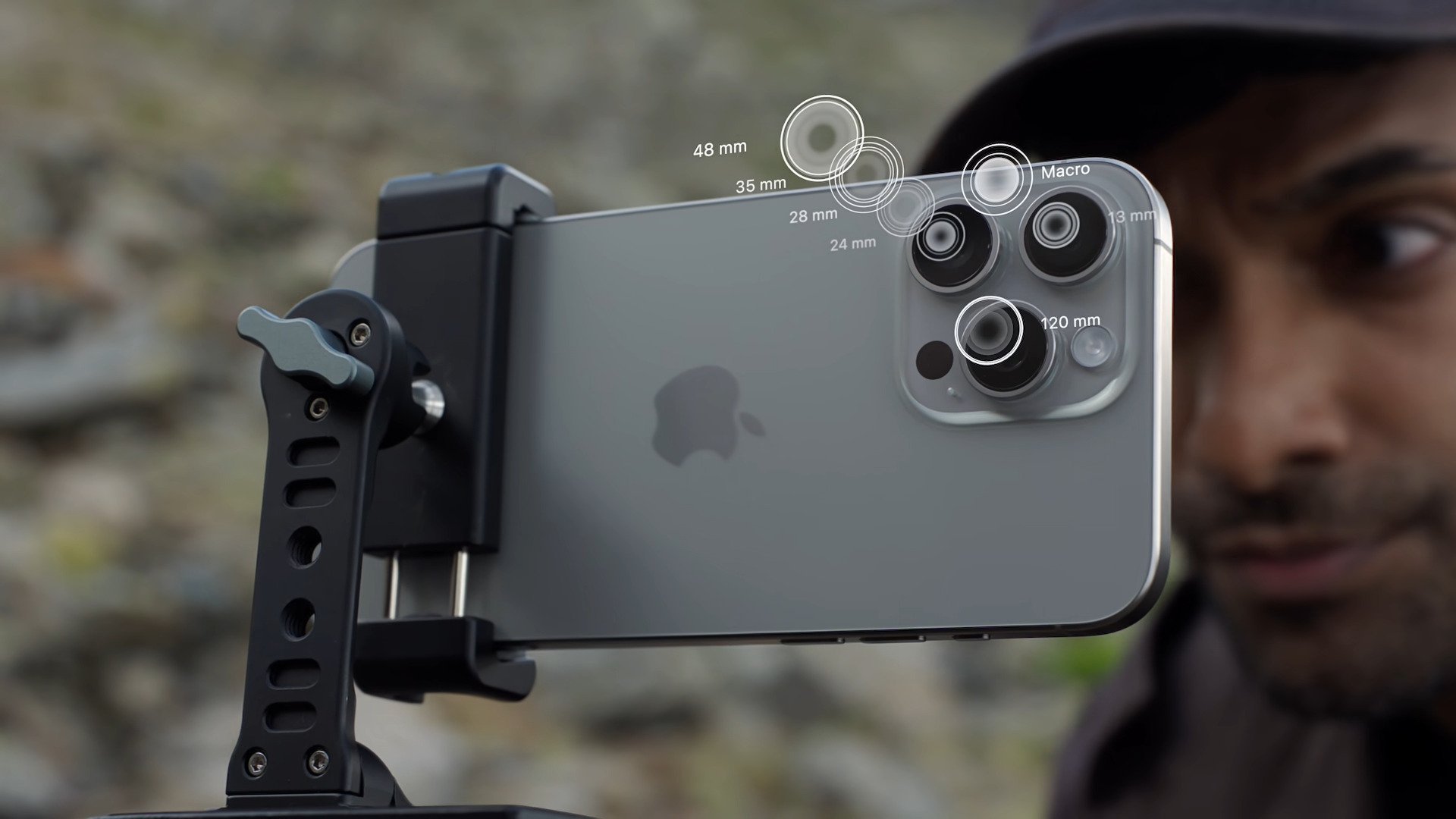The day after the announcement of the iPhone 15 Pro Max, we take stock of the different objectives offered by this new smartphone. So, are there three or seven?
Tuesday evening, Apple presented its new iPhone 15 Pro Max. Even more than the previous variations “ Pro » of the iPhone, this new model is particularly optimized for photography, in particular thanks to the integration of a telephoto lens with x5 zoom which is not present on the iPhone 15 Pro.
However, Apple’s message may have lacked clarity among users, the manufacturer having announced the possibility of taking advantage of seven different lenses… even though there are only three on the back of the smartphone.
Three lenses… for three levels of optical zoom
In one of its visuals, Apple communicates on the versatility of its iPhone 15 Pro Max in photography by announcing the possibility of taking macro photos, but also in 13 mm, 24 mm, 28 mm, 35 mm equivalent, 48 mm and 120 mm without loss.
For users more accustomed to talking about zoom levels, this means, in addition to macro, a zoom x0.54 (ultra wide-angle), x1 (wide-angle), x1.16, x1.46, x2 and x5 (telephoto).
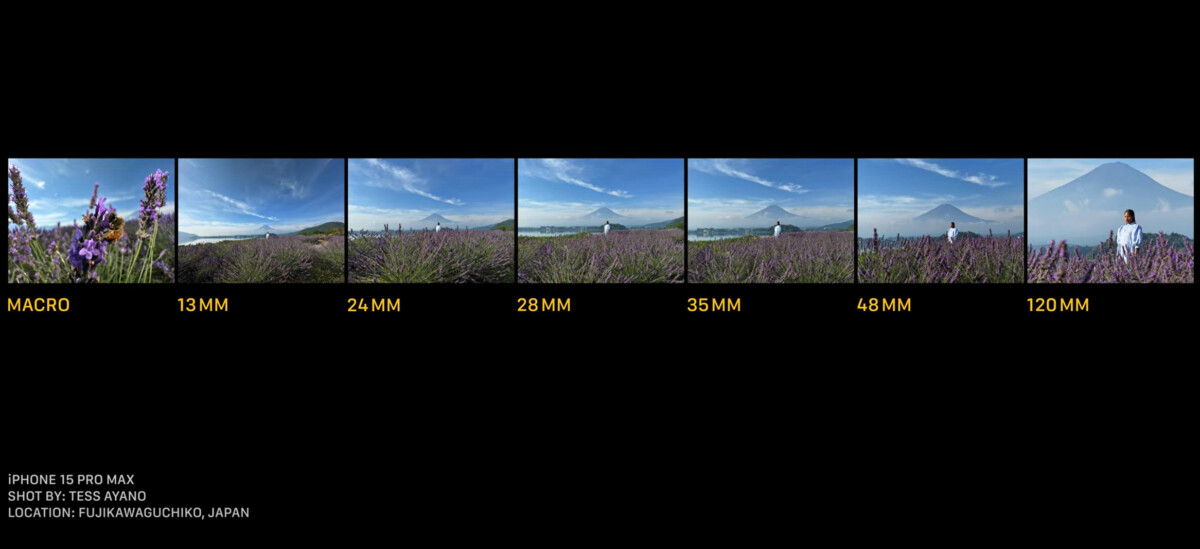
It should be understood that Apple uses here not only the real focal lengths of its different devices, for ultra-wide-angle, wide-angle and telephoto, but also classic focal lengths used in photography, such as 28 or 35 mm, often used for street or reportage photography.
Concretely, only the focal lengths of 13, 24 and 120 mm are real optical zooms, each corresponding to a different device on the back of the smartphone. To understand the announced focal lengths of 28, 35 and 48 mm, we must this time look at the technology embedded in the main photo sensor: pixel binning.
A very versatile main sensor
Like the iPhone 14 Pro before it, the iPhone 15 Pro (and Pro Max) has a 48-megapixel main photo sensor associated with the 24mm equivalent lens.
By default, this smartphone will actually capture 12 megapixel photos by grouping 4 photosites to form a single pixel, this is what we call pixel binning. This technology has the advantage of simulating larger photosites, thus allowing better management of low light, but also a higher dynamic range, particularly suitable for backlit photos for example.
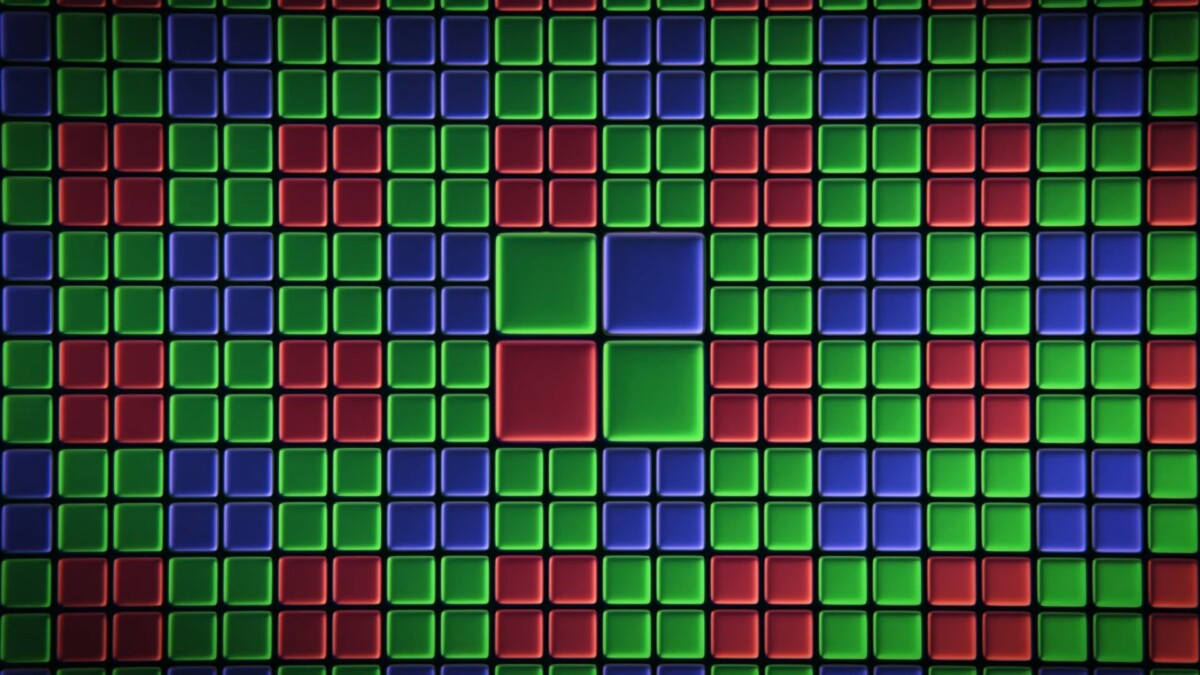
However, having a sensor with four times more pixels than the 12 megapixels needed to take a photo presents another major advantage. It will allow you to take advantage of this high definition to zoom in the image without reducing the definition. Thus, we can go up to a x2 zoom while retaining a total of 12 million pixels used for the photo – the same definition as the default mode, without zoom. With this type of hybrid zoom, the smartphone will no longer group the photosites into groups of four, but will allow you to gain definition, as if you had cropped the photo. More than a digital zoom where the pixels are artificially enlarged, the image is then captured in native definition, at least compared to the sensor’s default mode.
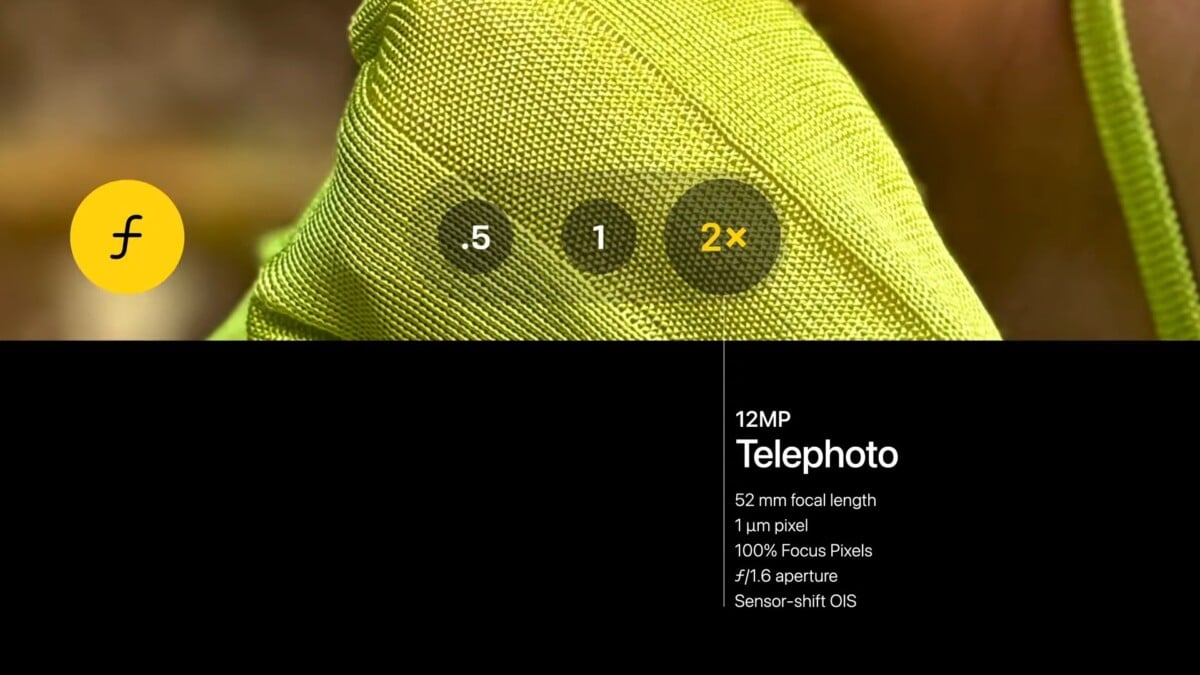
This explains the particularly vague wording used by Apple on the technical sheet of its iPhone 15 Pro Max:
2x 12MP telephoto lens (quad-pixel sensor enabled): 48mm, ƒ/1.78 aperture, 2nd generation sensor-shift optical image stabilization, 100% Focus Pixels
Here, the iPhone 15 Pro Max does not use a real dedicated x2 telephoto lens equivalent to 48mm. In fact, the smartphone will crop a 12 megapixel photo into an initial 48 megapixel image using the sensor associated with the main lens. It’s exactly the same principle for the other intermediate values of 28 mm and 35 mm where the iPhone will crop in the image of X1.16 and X1.46. You just have to resize the resulting photo so that it displays a definition of 4000 x 3000 pixels. We then indeed arrive at a photo of 12 million pixels… as in the default mode of the main sensor, without having to enlarge the pixels.
Optical, hybrid or digital zoom, it’s all the same for perspective
The question may then arise whether it is a digital, hybrid or optical zoom… it doesn’t matter. Apart from the digital zoom, which deteriorates the quality of the image by artificially enlarging each pixel, the rendering will be strictly identical from the point of view of the image and the perspectives.
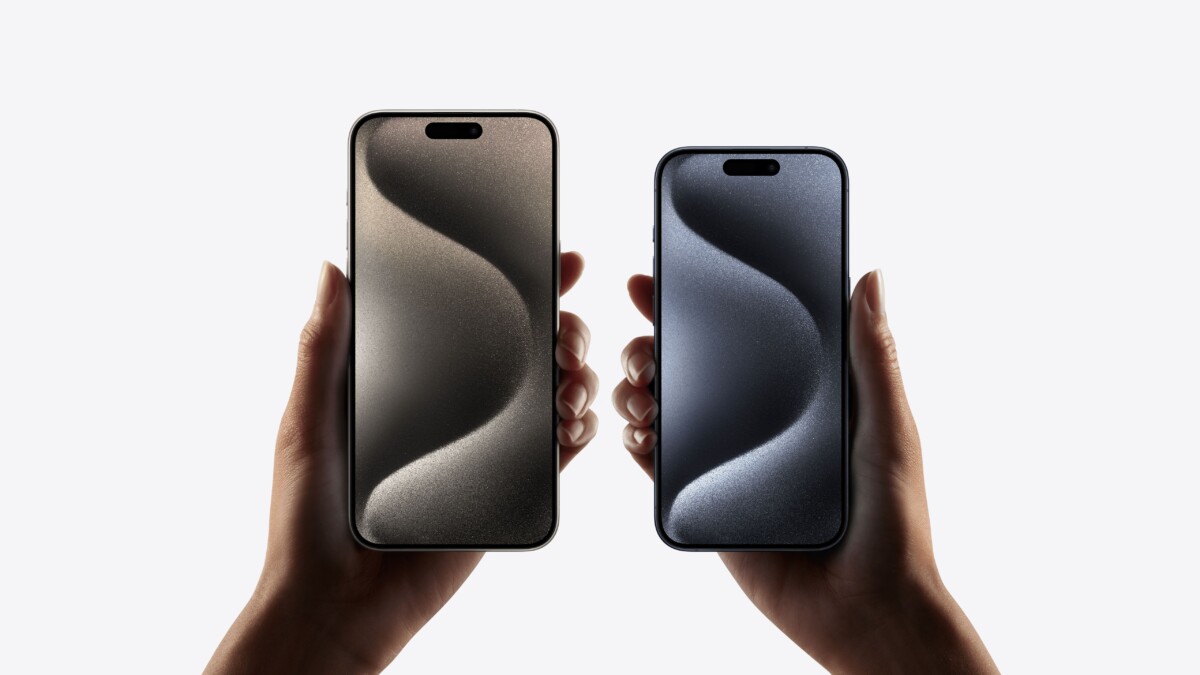
Contrary to popular belief – and one that I myself have tripped over in the past – it makes no difference to optically or digitally zoom in an image.
For the photo below, I took the same photo with a 17mm lens and a 170mm lens, at the same distance from the subject and then I cropped the photo to simulate a digital zoom: the perspective is perfectly identical in both photos.


Certainly, the photo captured with an optical zoom is of much better quality, with more details, better overall brightness and better background blur. If we want to print it 4 meters wide, offering more lenses on the smartphone will always be more qualitative. But in terms of the perspectives themselves, digital zoom reproduces the same proportions between the subject and its background as optical zoom. What matters in photography, to change perspectives, is not the zoom level, but the distance at which you place yourself from your subject. Whether with hybrid, optical or digital zoom, the further away you go, the more you will have squashed perspectives, with elements in the background appearing larger.
Above all, the problems linked to digital zoom should not be encountered by the iPhone 15 Pro Max with the virtual focal lengths of 28, 35 and 48 mm, since the smartphone will use a photosite each time to capture a pixel, without enlarging them in treatment. As for the background blur, it is not – or very little – generated optically on smartphones anyway, given the small size of the sensors, but is essentially worked on by algorithms using portrait mode. Here again, the smartphone should do well in this exercise, even with a hybrid zoom.
An ultra wide-angle also used for macro
The last point put forward by Apple during its conference concerns the objective “ macro » of the iPhone 15 Pro Max. Here too, no secret: macro is not a specific focal length. In fact, to take macro photos, the smartphone will use the ultra-wide-angle camera, as is already the case with the vast majority of high-end smartphones competing with Samsung, Xiaomi or Google.
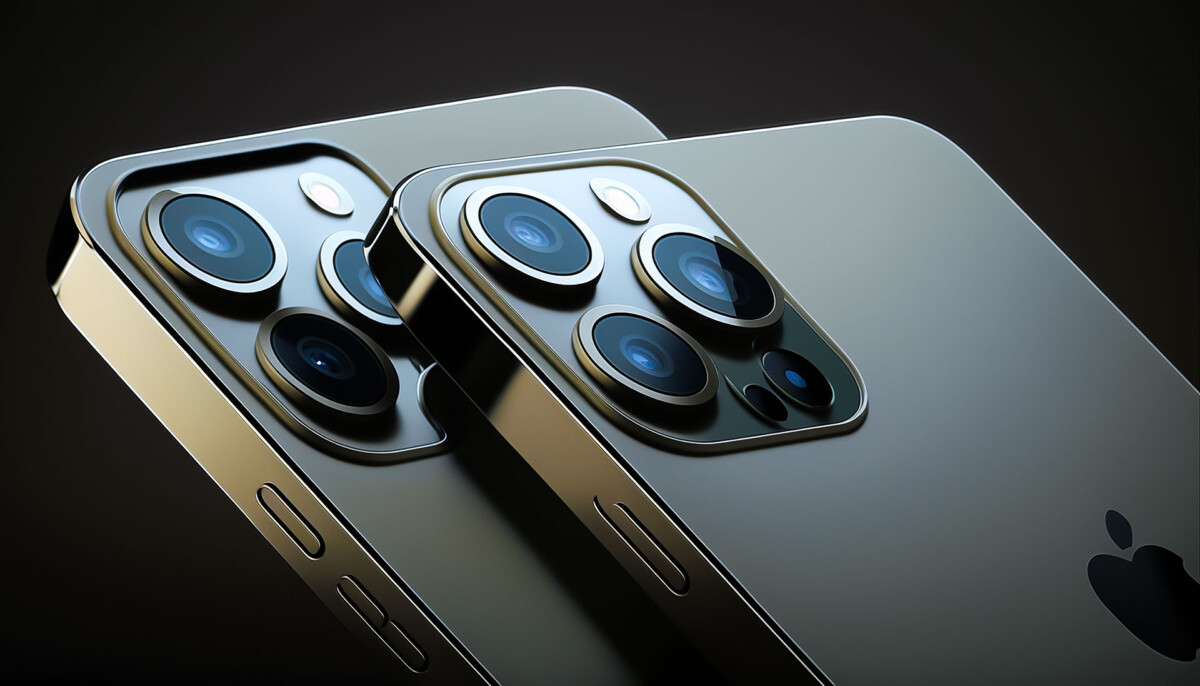
In fact, the advantage of ultra-wide-angle smartphone lenses is that they allow a particularly short focusing distance. From then on, it will be possible to get very close to the flowers or insects to capture a shot with great detail. Even if cropping can be done, the fact remains that the photo is indeed captured with the ultra-wide-angle lens, and not with a lens dedicated solely to macro.
A x3 zoom that disappears
On previous iPhone Pros – and on the iPhone 15 Pro – Apple has until now offered a device with a 77mm equivalent x3 zoom. This optic will disappear on the iPhone 15 Pro Max, replaced by the x5 periscopic zoom equivalent to 120 mm.
This change in optical formula is not without posing some problems in terms of versatility. Certainly, it will be easier to aim from afar with the iPhone 15 Pro Max, but the quality will be much lower beyond the x2 zoom. It must be said that between x2 and x5, the main sensor of the iPhone 15 Pro Max will not be sufficiently defined to offer a hybrid zoom without loss of quality. The smartphone will therefore logically crop further in the photo by enlarging the existing pixels to maintain a definition of the image – but not of the sensor – of 12 million pixels.
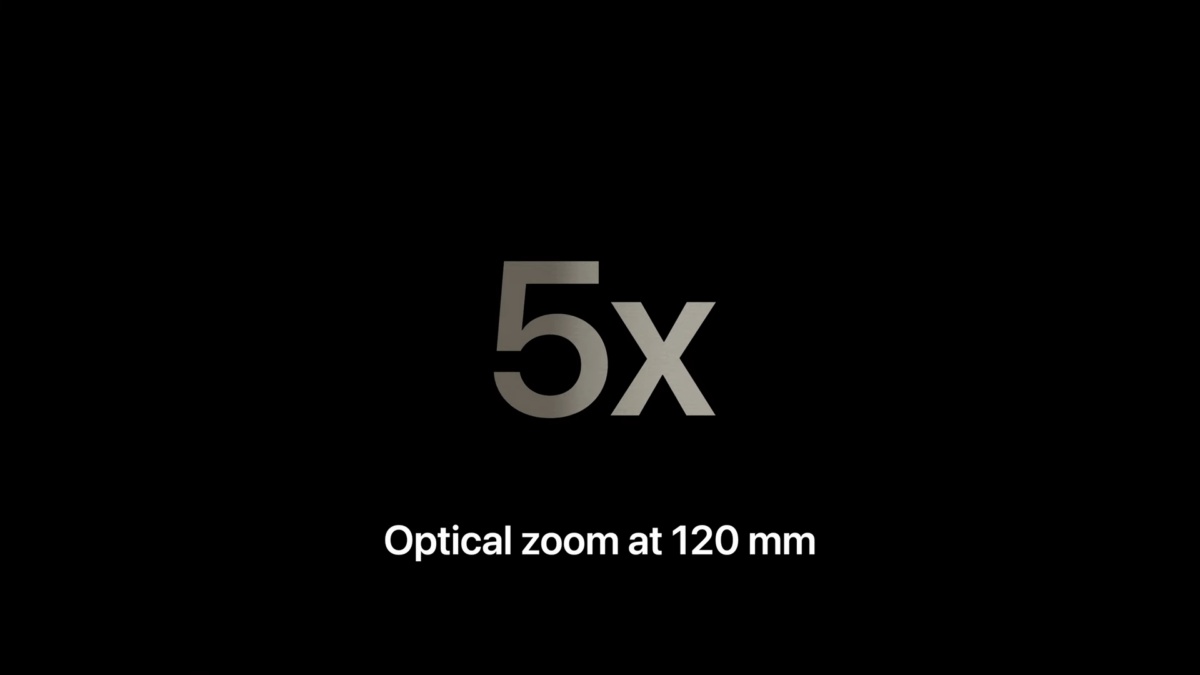
This problem is not exclusive to Apple. Samsung had to face the same problem with its Galaxy S23 Ultra, the image of which drastically loses quality as you zoom beyond x3, before once again offering an optical zoom at x10. Samsung is also considering providing a solution by offering a better defined sensor for its x3 device before allowing lossless zoom up to x6 on its Galaxy S24 Ultra.
Want to join a community of enthusiasts? Our Discord welcomes you, it is a place of mutual help and passion around tech.
